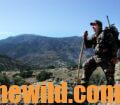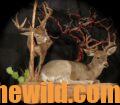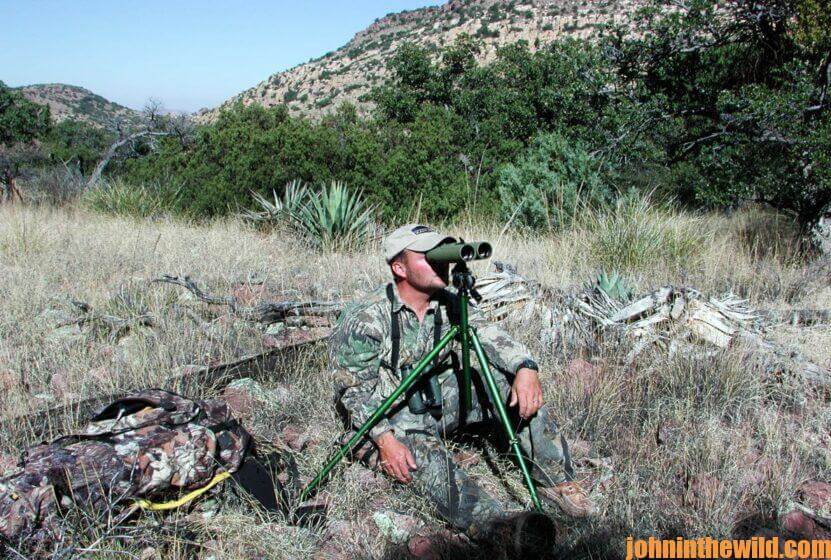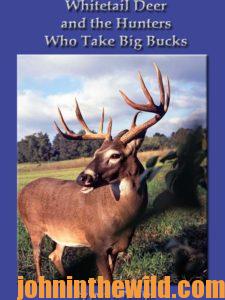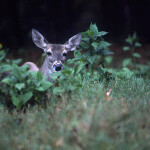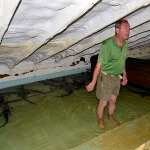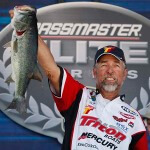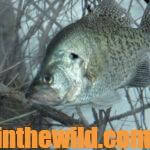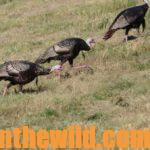Editor’s Note: Chris Denham of Chandler, Arizona, has lived in Arizona for 50+ years and started hunting when he was about 14. Denham, today the publisher of “Western Hunter Magazine” (https://westernhunter.net/), was previously an outfitter and took his first Coues deer when only 16-years old. A colonel in the U.S. Army and a naturalist, Dr. Elliott Coues, first identified a subspecies of the white-tailed deer, the Coues deer in 1865. The deer were named after him. Coues deer frequent southwestern mountain ranges that have scrub oak, manzanita, juniper, pinon pine and grassy bowls – often composed of mesquite and cacti – at elevations of 3,500 to 9,000 feet above sea level. They can survive without standing water for some time, depending on the moisture they retain from the vegetation they ingest. The top 5 Coues deer include: the Apache Buck with a B&C score of 196-2/8 points found in Graham County, AZ; the Chase Buck, 186-1/8 inches on B&C, taken in 1941 in Hidalgo County, NM; the Zellner Buck, 177-1/8 inches B&C, taken in Sonora, Mexico in 2009; a pick-up buck with 158-4/8 inches found in Santa Cruz County, AZ in 2009; a pick-up buck with antlers of 155-7/8 inches found in Sonora, Mexico in 2018. I hunted with Denham some years ago. Here’s what I learned.
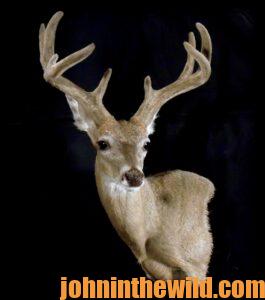
John E. Phillips: How do you hunt Coues deer?
Chris Denham: I hunt mostly by spotting and stalking – setting-up binoculars on tripods and glassing for the deer. A Coues deer hunt is primarily an optics hunt. Quality binoculars and spotting scopes will help you see and take more Coues. Also the laser range finder is very important. The most-important contributing factor to hunting accuracy is knowing the distance to the target. Prior to the creation of the laser range finder, even the most well-trained snipers only could estimate distance within +/- 20%, so any shot over 250 yards was not much more than a guess.
Phillips: In what kinds of places do you set-up your tripod to glass for Coues?
Denham: We’ll set-up on a point of a mountain where I can watch a valley and the face of a mountain across the valley. Climbing to great heights isn’t always necessary to be able to glass a large expanse of land. You do have to watch the sun and realize where the sun will come-up in the morning, and where it will set in the evening. Then the sun won’t be right in your face when you want to glass a canyon. You want the sun coming up on either your left or your right but not directly on the face of the mountain you want to glass.
Phillips: That way the deer’s back will shine, right?
Denham: Yes, the deer’s back will shine, especially when his back has any angle into the sun. My favorite time of day is around 10:00 am when the sun has risen just enough, so that it flashes off the tops of the deer’s backs. Having the correct tripod is critical for a couple of reasons when you’re hunting Coues deer. First of all, when the binoculars are on a tripod, you won’t sense any movement – except what’s out there in nature. Your hands and your body won’t move. Since the binoculars are rock-steady, if something moves – even a bird a mile away – you can spot it. Only 1% of your vision (about the size of a nickel) is actually in pure focus at any one time. When you hold binoculars up to your face with your hands and move around the mountain looking for deer, you’re only looking at 1% of the entire field of view in that binocular.
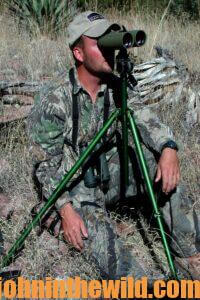
But when you have the binoculars on a tripod, the tripod enables you to incorporate 95% of your vision, which the rods and the cones in your eye are designed to do, and pick up movement. If you’ve ever watched a deer in the field, when that deer sees something, it whips its head around and holds its head perfectly still. You never see a deer waving its head around as the deer looks up and down a hillside. The deer looks and holds its head perfectly still to incorporate its entire eye. A tripod with tight tolerances won’t fall apart. All the screws are coiled in to keep them from backing out on you.
Phillips: What kind of binoculars are you putting on top of that tripod?
Denham: At some time during the hunt for Coues deer, I’ll use all the binoculars I carry with me. I like an 8X and a 10X binocular and wear one around my neck and put the other in my pack. I can put these binoculars on the tripod if I’m looking at the countryside about 600 or 800 yards away. That lower power gives me a much-wider field of view. Then I don’t have to move the tripod near as much. I use expensive binoculars that have great resolution or clarity. This resolution includes how clear the binocular is, and how well you can resolve the images you’re seeing. When you get a good look at some Coues deer in the shade, you’ll learn just how critical that color contrast or resolution is to pull the deer out of the background, so that you can see the deer where it’s standing against the forage. Then you actually can differentiate the deer from the rock. A second point about quality binoculars is their brightness during the critical first 1/2-hour and the last 1/2-hour of the day helps you be more successful.
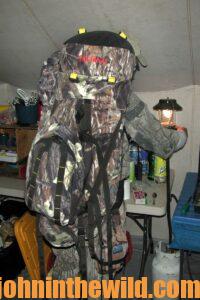
Phillips: Chris, to get your equipment to where you’ll look for these Coues deer, you use a specially-designed backpack.
Denham: You need a backpack ergonomically designed to fit your hips with belts that pull the weight in close to your body, causing the weight of this pack to ride on your hips, instead of your having to carry that weight on your shoulders. Then you don’t put stress on your shoulders and back.
Phillips: Another piece of equipment that you carry is a walking stick.
Denham: A walking stick gives you a level of confidence. My hunting pack typically will weigh 35 to 40 pounds on a day hunt. If you have 40 pounds hanging above your waist that you’re not accustomed to carrying, the walking stick gives you a leverage point high-up on your body. Then you can watch your balance, as you’re moving through this countryside that has numbers of football-sized rocks and loose shale all over the place, which makes stumbling easy. A walking stick will give you another point of stabilization.
Phillips: What do you look for in the camouflage you wear when hunting Coues?
Denham: In the mornings, the weather is cool. When you start hiking up those hills, the weather may be 30 degrees, but you can literally hike without a shirt on and still sweat. Having a material that wicks the moisture off your body fast and then dries extremely quickly is nice. You don’t want to be up in the mountains with a soaking-wet shirt for an hour when the wind is blowing hard. You literally can get hypothermia on a 45-degree morning, if you’re outdoors, wearing a wet shirt.
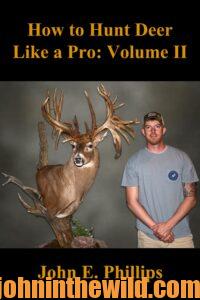
Phillips: The last piece of equipment we’ll talk about is the sleeping bag. You need to have a good place to sleep when you hunt hard all day. Tell me why you’ve chosen the type of sleeping bags that you have.
Denham: I like sleeping bags with a four-layer system in them. You can crawl into the top layer during a warm night. You can go down another layer on cooler nights. And, then you can move all the way down to a bottom layer around zero degrees and sleep outdoors with this bag. As you’ve mentioned, sleep is absolutely critical when you’re working this hard during the day. You must get a good night’s sleep. And, the key to getting a good night’s sleep is to be comfortable.
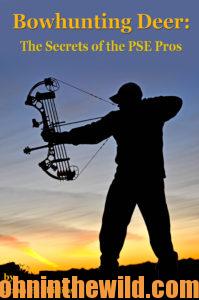 To learn more about hunting deer, * watch for John E. Phillips’ newest deer book, “How to Hunt Deer Like a Pro: Volume II,” due out in print by October 1, 2022, and in Audible by November 1, 2022. (See photo) * check out John’s book, “Bowhunting Deer: The Secrets of the PSE Pros,” and its Chapters 12 & 13 on Coues deer, available in Kindle and print at (http://amzn.to/VBr1qW), and soon to be available in mid-October in Audible. * see also, John’s book, “Whitetail Deer and the Hunters Who Take Big Bucks,” available in Kindle, print versions and Audible at http://amzn.to/2bYwYOK. You may have to copy and paste these links into your browser.
To learn more about hunting deer, * watch for John E. Phillips’ newest deer book, “How to Hunt Deer Like a Pro: Volume II,” due out in print by October 1, 2022, and in Audible by November 1, 2022. (See photo) * check out John’s book, “Bowhunting Deer: The Secrets of the PSE Pros,” and its Chapters 12 & 13 on Coues deer, available in Kindle and print at (http://amzn.to/VBr1qW), and soon to be available in mid-October in Audible. * see also, John’s book, “Whitetail Deer and the Hunters Who Take Big Bucks,” available in Kindle, print versions and Audible at http://amzn.to/2bYwYOK. You may have to copy and paste these links into your browser.
When you click on the books, notice on the left where Amazon says you can read and hear 10% of these books for free. On the right side of the page for each book and below the offer for a free Audible trial, you can click on Buy the Audible book.
Tomorrow: Learn More about Coues Deer Hunts

